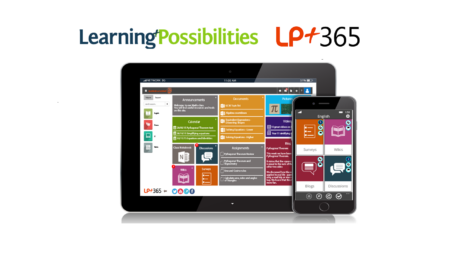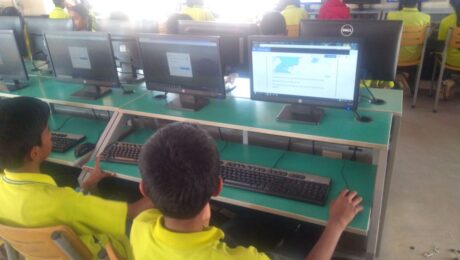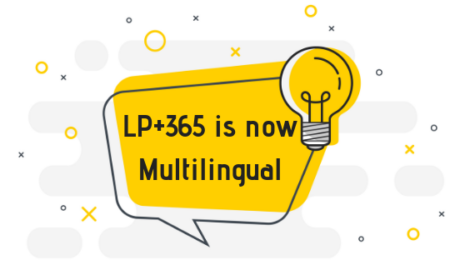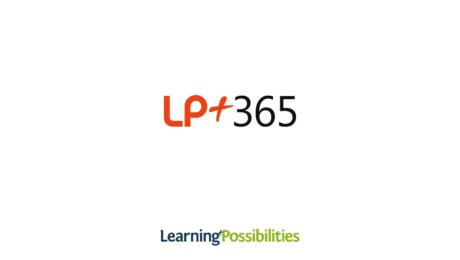EdTech 101 Part 2 – Education Technology is the Answer
In my last blog, I looked at how the education industry was unique, complex and unlike other ‘corporate’ markets. In this blog, I look at how EdTech is the answer to transforming education, but perhaps not as it is currently.
EdTech has the power to transform technology, but only if it’s adopted. The education system is undergoing this process as the need to encourage digital skills, engage learners and drive employability gains momentum. Adoption is the key.
You don’t need the “M”
LMS, or Learning Management System/solution is the title given to almost all EdTech platforms. Many come and go, and few achieve any scale. These platforms have a common characteristic; they manage the process of teaching and learning. Often created by technologists with little experience of schools, they often focus on automating the teaching process by following sequences or steps. In the corporate world, this drives productivity and cost-saving. In education, not only does this limit the teachers’ pedagogical approach, It requires a large investment in teacher training. Not surprisingly, many LMS end up being little more than document repositories or filing systems with relatively low adoption. Flexibility is the key, in both usage models and pedagogical approaches.
Start with the problem, not with the technology
Often I see EdTech founders keen to improve education and excited about introducing a new technology. This could be artificial intelligence, robotics or even student voice solutions.
The reality is that educational institutions face a number of challenges; connectivity, device shortages, low levels of technology support staff, and teacher-time to name a few. EdTech founders need to understand both the problems they are addressing as well as the efficacy of their solution. Often this needs to be through proper academic studies if teachers are to believe and invest time in the technology.
It needs scale, needs to be secure and also affordable
Governments have limited funds and often EdTech is low on the priority list, particularly as it is still possible to pass exams well without the need for technology. Many large companies have ‘education pricing’ strategies for their corporate/consumer solutions with discounts of 80% and more. Yet any solution, for large scale deployment, needs to have scale and security, which costs a great deal of money. Having a strategy to address this, whilst being affordable is a key design criterion that EdTech companies ignore at their peril.
You need an adoption strategy
So you have a large government contract and a deployment plan. Great. The key to getting ongoing business is adoption. Will teachers use the solution? The graveyard of failed EdTech solutions is vast. Adoption begins with product design and usage strategies, not with training. We were so convinced that this was the key to a successful EdTech business, we published our strategy – ADOPT (an acronym for our 5 stages of e-maturity: Awareness, Development, Optimisation, Pioneering and Transformation). It went on to become the UK’s national e-maturity framework and the foundation for all our solution development.
Combined with the uniqueness of the education marketplace (see last blog) these four considerations make EdTech truly distinctive. These characteristics are commonplace in those who succeed in the education world, however, I suspect that many of you will be wondering if this is just too difficult? The answer for Learning Possibilities has been the dual benefits of being a growing business and the satisfaction of seeing a large number of learners gain improved education outcomes.
In the next blog, I look at the current trends in education and how they will dictate future EdTech marketplaces.
- Published in Articles, Uncategorized
EdTech 101 Part 1 – The Uniqueness of Education by Mehool Sanghrajka
Dr Mehool Sanghrajka is the Founder and CEO of Learning Possibilities. He has been working at the forefront of education for 20 years.
————
I often get asked to talk to EdTech start-ups about how they should approach the market to become successful long term players. I have finally got around to writing the no-nonsense blog on success in EdTech that I promised many of them.
This three part series, will be published over the next few weeks, looking at the different aspects of the education marketplace and the factors that often lead to success.
The Uniqueness of Education
For many decades, EdTech has be touted as the answer in reforming education. For two decades ‘21st Century Skills’ have been paraded as the answer to the growing skills gap between school/college leavers and employers. Yet there are few success stories in EdTech. The problems in education are complex, as are the solutions.
New entrants to the EdTech market often confuse it with the corporate or wider public sector markets and assume good technology will rapidly gain momentum.
Understanding and navigating the nuances (highlighted below) of the education market is the key to finding a viable and adoptable solution.
Think…Slow Down!: everything in Education moves slowly.
I often laugh at the phrase ‘Education is a get rich slow business’, and it’s usually true.
Education around the world is broadly split into fee-paying and (state or central) government institutions. Both have unique characteristics, but the key differential is scale. In almost every country, learners in government institutions far outnumber, by several multiples, those in fee-paying institutions. In addition, governments usually buy for large number of schools where as fee paying institutions are usually alone or grouped in small numbers.
The other EdTech market is the consumer or parent. Studies show that parents engagement helps their children’s academic success. Here the challenges are different; alignment with curriculum and school teaching, marketing strategies to reach target parents, and competing with free products like Khan Academy.
If you want (or need) scale, then understanding government purchasing cycles is the key. These cycles can be multi-year and sometimes be part of a wider national vision to build a knowledge or digital economy. Procurement may involve public tenders or strict funding criteria. Learning to navigate these needs to be an essential part of any EdTech strategy.
Governments buy, teachers teach and students learn
In the corporate world, purchasing decisions are usually through a purchasing department and often related to a productivity or cost-saving ROI (return on investment) measure. Education is different. Teachers are overworked and therefore saving costs is not their priority. Further asking time-poor teachers to invest time in learning technology solutions is usually difficult when it’s frequently possible to pass exams well without access to specific learning technology. We focus our strategy on meeting government strategies, whilst having firm plans to engage with teachers and drive learning outcomes for learners.
Buying happens only within academic calendar windows
Unlike the corporate world, schools operate within the boundaries of school terms and holidays. This defines when purchasing activities, pilots and project rollouts can happen. It also determines when related (but separate) items such as devices and connectivity may be bought.
Understanding the rhythm of the education calendar is vital, as is being part of the annual cycle of exhibitions and conferences. We set our annual calendar and plan our sales campaigns and customer pilots around school terms.
Schools don’t like variable costs
Today having a scaleable solution often means some form of cloud service. These are usually ‘pay-as-you-use’ services, which means incurring variable costs, sometimes with little ability to control teacher or learner usage or behaviour. This model is also contraindicative, as good usage means higher cloud consumption costs.
Government customers usually only work on predictable fixed costs, that they can budget. Having strategies to manage variable costs is usually necessary for global reach.
Students change class every year
As all parents know, children change classes every year. This makes student identity management and data security complex, yet critical. Teachers changes classes and schools many times in their education career. Managing this is more complicated than standard corporate implementations where user change or turnover is low.
In the next blog, I will look at how EdTech is the answer to transforming education, but perhaps not as it is currently.
- Published in Articles, Uncategorized
Learning Possibilities Renews Microsoft Gold Partnership
Learning Possibilities are thrilled to renew their Microsoft Gold Partner certification for Gold Datacentre, Gold Cloud Productivity, Silver ISV and Silver Collaboration and Content.
Learning Possibilities is a co-sell ready global Microsoft Partner working in 5 regions with partners in over 20 countries, working with local partners on a global scale to deliver LP+365, the next generation Learning and Collaboration Platform. Hosted on Azure and proven to drive adoption of all major features of Office 365, the app drives school investment in Office365.
LP+365 is built on LP+ technology and has been used by over one million learners globally, won major national and international awards for its efficacy and is built on our ADOPT Framework, the UK national standard for e-maturity in schools.
Our continued efforts in improving the app have led to the addition of a multilingual interface, auto-provisioning functionality and the LP+ Exam tool.
To learn more about LP+365 click here to download our brochure.
- Published in Articles, Uncategorized
Join Learning Possibilities at Bett 2019
We are thrilled to be attending Bett UK 2019 showcasing the latest version of our LP+365 app, the new features we have added and what’s to come for the rest of 2019.
Showcasing the LP+365 Multilingual Interface
The LP+365 multilingual interface allows students and teachers to seamlessly switch between languages in the menu bar. The language options are unlimited and supports multiple scripts, for example Arabic and the Indian languages.
Languages can be selected dynamically by the user and the choice of language is determined by the global administrator. Having the right language drives adoption of the platform and the embedding of LP+ technology into daily use.
Managing Learner Identities & Auto-Provisioning Feature
Managing Learner Identities throughout students education career is critical for ensuring security. LP+365 is integrated into Microsoft SDS and many other school administration tools for auto-provisioning.
Introducing…LP+ Exam
Preview the new tool we have been working on, LP+ Exam. The tool is integrated into our platform for school and ministry of education n exams. It boasts a wide range of question types with auto-marking features, monitoring and submission capabilities, question randomisation and auto-save offline functionality. LP+ Exam delivers results through a full analytics and reporting package.
Download our new LP+365 brochure here to learn more about LP+365 & contact us at [email protected] to meet with us at Bett UK 2019.
We look forward to seeing you there.
- Published in Articles, Uncategorized
Looking back at our National Welsh Project
As we reflect on a successful 8 years of holding the national contract for digital wales we look back on the impact the platform had in inculcating Microsoft technologies into schools across wales.
Check out the Microsoft blog below & take a look back at the successful project:
- Published in Articles, HWB+, Uncategorized
Ashok Leyland School- Focused pilot led by award winning Microsoft Digital Coordinator
Level: K-12
Usage: 100%
Initiative: Monitoring and measuring learning outcomes
Key Findings…
✓ Enjoyed sharing resources and sending messages via the app. Easy to communicate particularly useful using the announcement and discussion tools.
✓ LP+365 enables student engagement inside and outside of the classroom
✓ LP+365 supports blended learning pedagogical scenarios
✓ LP+365 develops self-paced personalised learning strategies
The Challenge
The Ashok Leyland School in the Hosur region of Tamil Nadu is committed to providing the best possible learning environment for a rapidly changing world. LP+365 is perfectly placed to support Ashok Leyland School’s sustainable and scalable model aiming to achieve a 20% improvement in learning levels of students as well as a 20% reduction in dropout rates and increase in attendance and engagement.
The success criteria for this project centred around being able to measure how far LP+365 helps at least three-quarters of the students are able to integrate technology with their lesson, collaborating and sharing their views and ideas across collaboration tools.
Chandrachoodeshwaran M, Microsoft digital learning coordinator at Ashok Leyland School said:
“The students have really enjoyed integrating digital technology into their pedagogical journey. Using the Office 365 toolset integrated into the LP+365 app makes teaching more time efficient.”
Result…
For teachers, the advantages of the LP+365 learning and collaboration platform are clear. LP+365 enables the school to reach the government set goals to improve not only student learning outcomes but the collaboration tools contribute towards improving attendance and student engagement.
Chandrachoodeshwaran M explained adding the ability to personalise content has had a positive outcome on focused learning:
“The auto-provisioned Class Notebook is a major advantage of the app over using OneNote, improving class collaboration.”
Click here to find out more about LP+365 or Click here to arrange a FREE demo
- Published in Articles, Uncategorized
The LP+365 Multilingual Feature & Autumn Updates
We are thrilled to announce the new multi-lingual feature on LP+365.
The LP+365 multilingual interface is now available in beta, and allows students and teachers to seamlessly switch between languages in the menu bar. The language options are unlimited and supports multiple scripts, for example Arabic and the Indian languages.
Languages can be selected dynamically by the user and the choice of language is determined by the global administrator. Having the right language drives adoption of the platform and the embedding of LP+ technology into daily use.
The new feature will help students to…
✔ Learn new languages
✔ Improve the fluency of native languages
✔ Be part of the international community
✔ Develop digital skills using their native language
The feature helps teachers to…
✔ Drive usage of the app and improve digital literacy
✔ Improve students adoption of new languages
✔ Help teachers communicate with international students
Check out the multi-lingual promo video to find out more…
As always we’d love to hear from you and your thoughts about the new updates. Contact us on Twitter or Facebook to let us know what you think!
- Published in Articles, Uncategorized
LP+ Autumn App Updates & Performance Enhancements
The LP+ Tech Team have been busy bug fixing & updating the app to improve it’s performance in the classroom:
✔Students are now able to begin their assignments directly through email hyperlinks
✔Improved links to picture tile thumbnails
✔Optimised performance for retrieval of blog categories
✔Improved Assignment views to meet web accessibility standards
✔Calendar bug fixes and improved views in all browsers
✔Improved provisioning of special characters in Class Notebook
✔Improved ability to export active licence info for user accounts
✔Progressive Web App now includes the analytics feature in the full school app
✔Mobile browser optimisation
✔New Web Content Accessibility Guidelines (WCAG) 2.1 optimisation
We’d love to hear from you and your thoughts about the new updates or answer any questions you have about these changes. Contact us on Twitter or Facebook to let us know what you think!
- Published in Articles, Uncategorized
Problem Solved…by Prof. Stephen Heppell
As a school student (and that was a good few years ago now – think flared trousers and too much hair!) I loved mathematics. We were one of just two pilot schools for the then revolutionary School Mathematics Project. SMP focussed on things such as sets, graphs, Boolean logic, non-Cartesian co-ordinate systems, non-decimal number systems, matrices, vectors and more. It was visual, relevant (I still see the world in Venn diagrams!) and exciting. I did well, but then suddenly along came “A” levels; sadly, there was then no “A” level SMP maths, so I was plunged into a mysterious world of calculus, quadratics and algebra in general. It was like waking up in a foreign country, confused.
Years later, when the I first watched a (huge) supercomputer solving a quadratic equation I remember thinking how handy it would have been to access that kind of helpful power, day to day during my “A” levels. Sadly, that supercomputer’s cost ran into millions of pounds, and filled a room when we installed it in Westminster. Actually, it remains the most expensive and largest computer that I ever purchased.
Today however, thanks to the miracle that is captured in Moore’s Law (where Gordon Moore noted that overall processing power for computers doubled every two years or so), much more power than that huge early supercomputer is in today’s sleek phones, tablets, and laptops. As the hardware has got better, the software has got cheaper too! As a big fan of OneNote, it still amazes me that this simple tool has the power to let you type in, and then watch, as OneNote solves mathematical equations using many mathematical functions.
However, this is not about just solving those equations, it is about understanding those solutions and OneNote will helpfully step you through all the stages of a solution. You can repeat, review, vary and solve as often as you like. Repeat until understood. Brilliant!
This all matters of course, because in a world of big data and of algorithms, good mathematicians are scarce. Kids dreaming of a career as a Games designer need good maths. A career in health needs good maths, practically every senior career post, including in schools, needs good mathematics. Now, if I can just build a time machine and take wonderful OneNote back to my “A” level maths paper…
- Published in Articles, Uncategorized
Why LP+365 is not an LMS?
For many years, the terms Learning Management Systems (LMS) and Virtual Learning Environments (VLE) have been applied to almost all platforms in schools. We’ve built LP+365 to be different. With over 400m learners having access to #Office365 we believed it was essential to have a learning and collaboration platform that fully exploits the power of Office 365, yet was simple enough to learn within 20 minutes.
LP+365 is not an LMS. Traditional LMS are designed to deliver education courses, or support the teacher in delivering material to students. This usually means the LMS is process driven, often rigid and incompatible with modern pedagogies. Teachers usually require a lot of training and professional development, and many of these platforms are used as little more than glamorised document libraries.
LP+365 is different, it is a Learning and Collaboration Platform (LCP). A simple set of dashboards that presents all the functionality and apps within Office 365 that are proven to have efficacy in an education environment. Usage of these tools has been further simplified by having one-click tiles and an intuitive user interface. With the integration of our ‘one minute’ how-to videos and a full support site to drive adoption, LP+365 is a simple way for teachers to use Office 365 in the classroom thereby developing critical skills in learners.
LP+365 encapsulates a set of tools that are readily available at any time in any context, including the delivery of course material. The platform provides resource management tools, collaboration tools, communication tools, assignments, and analytics and administration tools. These can be used at any time in any context, supporting many pedagogical approaches.
With almost no limit on storage or types of content, the cloud based LP+365 App works on any browser, on any device on and offline.
With such a long history of LMS and VLE, why do we need a LCP? Research shows that students or learners who have strong collaboration and communication skills, as well as knowledge of Microsoft Office tools have a greater chance of employability. LP+365 seeks to give learners an experience of the modern working environment, whilst supporting many teaching and learning styles, and minimising the teacher’s training needs.
- Published in Articles, Uncategorized











